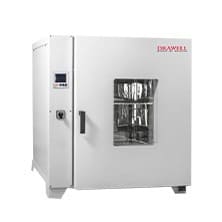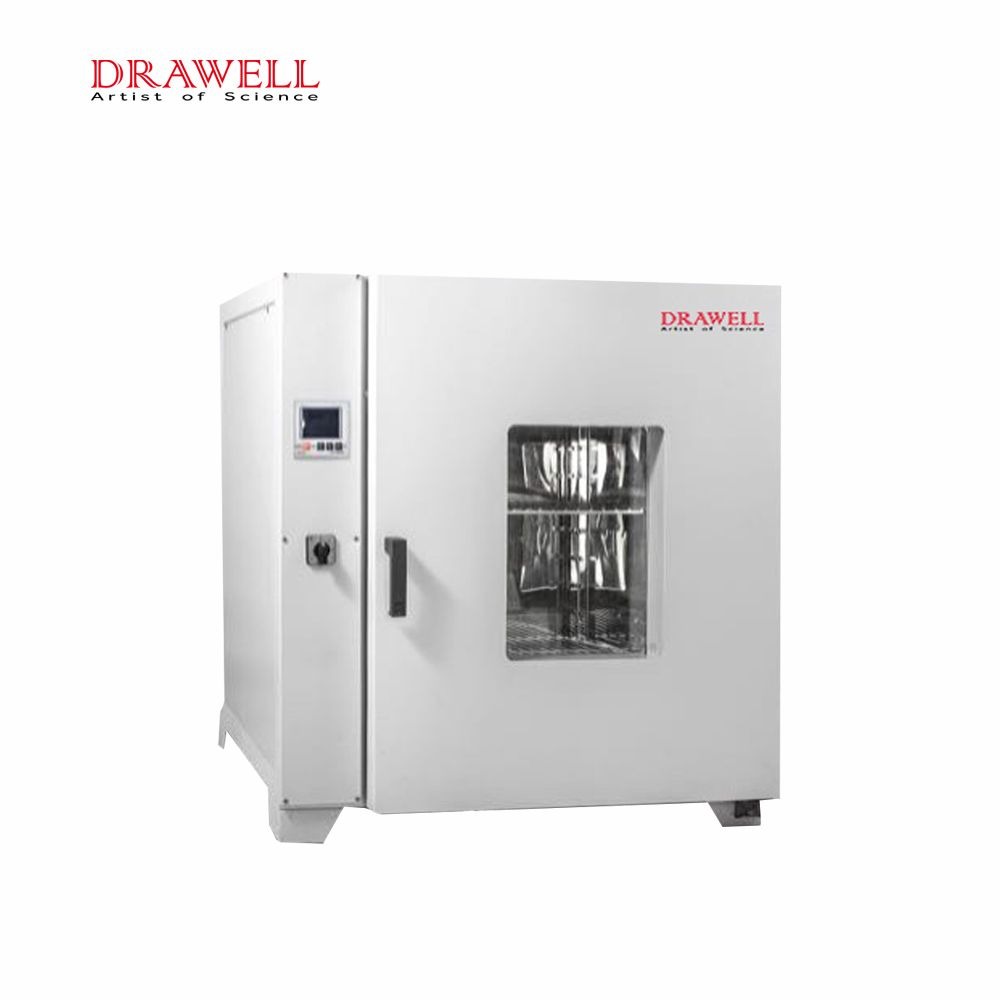In the nanomaterial synthesis and processing, speed and efficiency are paramount. Traditional methods can need lengthy processing times, which impedes the quick development and deployment of nanotechnology. However, with the advent of infrared fast drying ovens, researchers and industrialists have found a promising solution to expedite the synthesis and processing of nanomaterials. These innovative drying ovens harness the power of infrared radiation to rapidly dry, heat, and sinter nanomaterials, revolutionizing the field with their unprecedented speed and precision.
Understanding Infrared Fast Drying Ovens
Infrared fast drying ovens use infrared radiation to expedite the drying, heating, and sintering processes. Unlike conventional convection ovens that rely on heated air to transfer heat, infrared ovens emit electromagnetic radiation directly onto the surface of the material, enabling rapid and uniform heating. This targeted energy transfer minimizes heat loss and significantly reduces processing times, making them ideal for the synthesis and processing of nanomaterials.

Key Advantages of Infrared Fast Drying Ovens in Nanomaterial Synthesis and Processing
1. Rapid Drying
Infrared fast drying ovens utilize infrared radiation to rapidly heat materials, significantly reducing drying times compared to conventional methods. This accelerated drying process is particularly beneficial for nanomaterial synthesis, where precise control of drying conditions is crucial to prevent agglomeration or degradation of nanoparticles.
2. Uniform Heating
Infrared ovens provide uniform heating across the entire surface of the material, ensuring consistent drying and minimizing the risk of temperature gradients. This uniform heating is essential for synthesizing homogeneous nanomaterials and achieving reproducible results in nanoparticle processing.
3. Precise Temperature Control
Infrared drying ovens offer precise temperature control, allowing researchers to maintain optimal processing temperatures for nanomaterial synthesis. This precise temperature control is vital for controlling reaction kinetics, particle size distribution, and crystallinity in nanoparticle formation processes.
4. Gentle Processing
Infrared radiation heats materials directly without the need for convective air currents, reducing the risk of overheating or thermal damage to delicate nanomaterials. This gentle heating method is ideal for processing sensitive nanoparticles, ensuring their integrity and functionality during drying and annealing processes.
5. Energy Efficiency
Infrared ovens are energy-efficient compared to conventional drying methods, as they transfer heat directly to the material without heating the surrounding environment. This energy efficiency results in reduced processing costs and environmental impact, making infrared ovens a sustainable choice for nanomaterial synthesis and processing.
6. Compact Design
Infrared fast drying ovens are typically compact and space-saving, making them suitable for laboratory-scale nanomaterial synthesis and processing. Their compact design allows researchers to optimize space utilization and integrate them into existing laboratory setups for seamless nanoparticle production.
7. Versatility
Infrared ovens are adaptable and can be used for a variety of nanomaterial production and processing methods, such as drying, annealing, sintering, and calcination. This adaptability allows researchers to carry out a wide range of nanoparticle synthesis activities while tailoring processing settings to specific material attributes and applications.
8. Ease of Operation
Infrared ovens are user-friendly and easy to operate, with intuitive settings for temperature, duration, and heating profiles. This ease of use enables researchers to concentrate on experimental design and data analysis rather than the technical aspects of oven operation, expediting the nanoparticle production process.

Applications of Infrared Fast Drying Ovens in Nanomaterial Synthesis and Processing
1. Nanoparticle Synthesis
Infrared drying ovens are used to synthesize nanoparticles using sol-gel, hydrothermal, and microwave-assisted techniques. The rapid and uniform heating provided by these ovens facilitates nucleation and growth processes, leading to the production of nanoparticles with controlled size, shape, and properties.
2. Carbon Nanomaterial Processing
Infrared ovens play a crucial role in the processing of carbon nanotubes (CNTs), graphene, and other carbon-based nanomaterials. These ovens are used for thermal treatment, purification, functionalization, and doping processes, enabling the production of high-quality carbon nanomaterials with tailored properties for applications in electronics, energy storage, and composites.
3. Thin Film Deposition
Infrared fast drying ovens are utilized in the deposition and processing of thin films containing nanomaterials. For example, in semiconductor manufacturing, these ovens are used for rapid curing or drying of precursor solutions containing nanomaterials, leading to the formation of thin films with desired electrical, optical, or magnetic properties.
4. Polymer Nanocomposites
Infrared fast drying ovens are employed in the fabrication of polymer nanocomposites, where nanomaterials such as nanoparticles, nanotubes, or nanofibers are dispersed within a polymer matrix. These ovens are used for processes such as melt blending, solvent evaporation, or in situ polymerization, ensuring uniform distribution of nanomaterials and enhancing the mechanical, thermal, and barrier properties of the resulting composites.
5. Drug Delivery Systems
Infrared ovens are used in the synthesis and processing of nanomaterials for drug delivery applications. For instance, in the production of drug-loaded nanoparticles or thin films, these drying ovens facilitate rapid drying, curing, or encapsulation processes, leading to the development of drug delivery systems with controlled release kinetics and enhanced therapeutic efficacy.
6. Catalysis
Infrared ovens are employed in the synthesis and activation of nanocatalysts for various catalytic reactions. The rapid heating provided by these ovens accelerates catalyst activation and improves catalytic efficiency, making them suitable for applications in environmental remediation, energy conversion, and chemical synthesis.
7. Biosensors and Diagnostics
Infrared drying ovens are utilized in the production of nanomaterial-based biosensors and diagnostic devices. These ovens are used for procedures such as surface functionalization, biomolecule immobilization, and thermal annealing, allowing the creation of sensitive, selective, and quick detection platforms for use in healthcare, environmental monitoring, and food safety.
Challenges and Solutions of Infrared Fast Drying Ovens in Nanomaterial Synthesis and Processing
| Challenge | Description | Solution |
| Heat Distribution | Uneven heating within complex nanostructures can lead to non-uniform properties or incomplete reactions. | Implement advanced heating control algorithms and design modifications to ensure uniform heat distribution. |
| Material Compatibility | Certain nanomaterials may be sensitive to high temperatures or incompatible with infrared radiation. | Develop customizable heating profiles and explore alternative heating methods for temperature-sensitive materials. |
| Process Optimization | Achieving optimal synthesis conditions for diverse nanomaterials requires precise temperature and time control. | Utilize real-time monitoring and feedback systems to fine-tune process parameters and optimize synthesis conditions. |
| Scaling Up Production | Transitioning from laboratory-scale to industrial-scale production may pose challenges in maintaining efficiency. | Design modular systems and integrate automation for seamless scalability while ensuring consistent performance. |
| Energy Consumption | Despite energy efficiency, continuous operation of infrared ovens may still consume substantial amounts of energy. | Implement energy-saving features such as insulation improvements, heat recovery systems, and optimized operating modes. |
| Contamination Risks | Introduction of impurities or contaminants during processing can compromise the purity and properties of nanomaterials. | Implement stringent cleanliness protocols, isolation measures, and inert atmospheres to minimize contamination risks. |
Addressing these challenges through innovative solutions ensures the effectiveness and reliability of infrared fast drying ovens in nanomaterial synthesis and processing, enabling efficient, scalable, and high-quality production of advanced materials.
Conclusion
Infrared fast drying ovens represent a transformative technology in the field of nanomaterial synthesis and processing, enabling researchers and manufacturers to expedite the development and production of advanced materials with tailored properties and functionalities. By harnessing the power of infrared radiation, these ovens offer rapid processing, enhanced precision, and energy efficiency, paving the way for breakthroughs in diverse applications ranging from electronics and energy storage to healthcare and environmental remediation.

